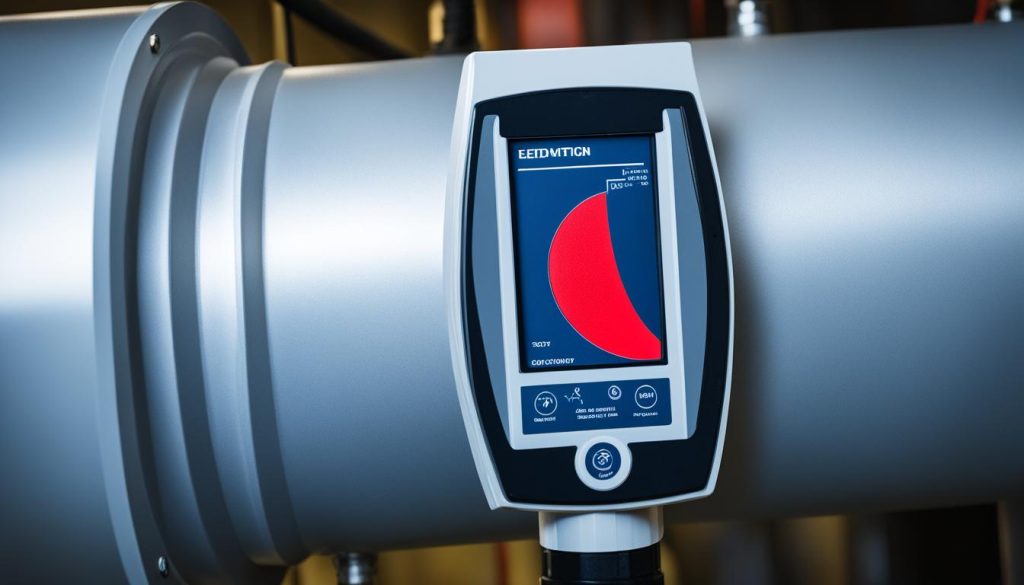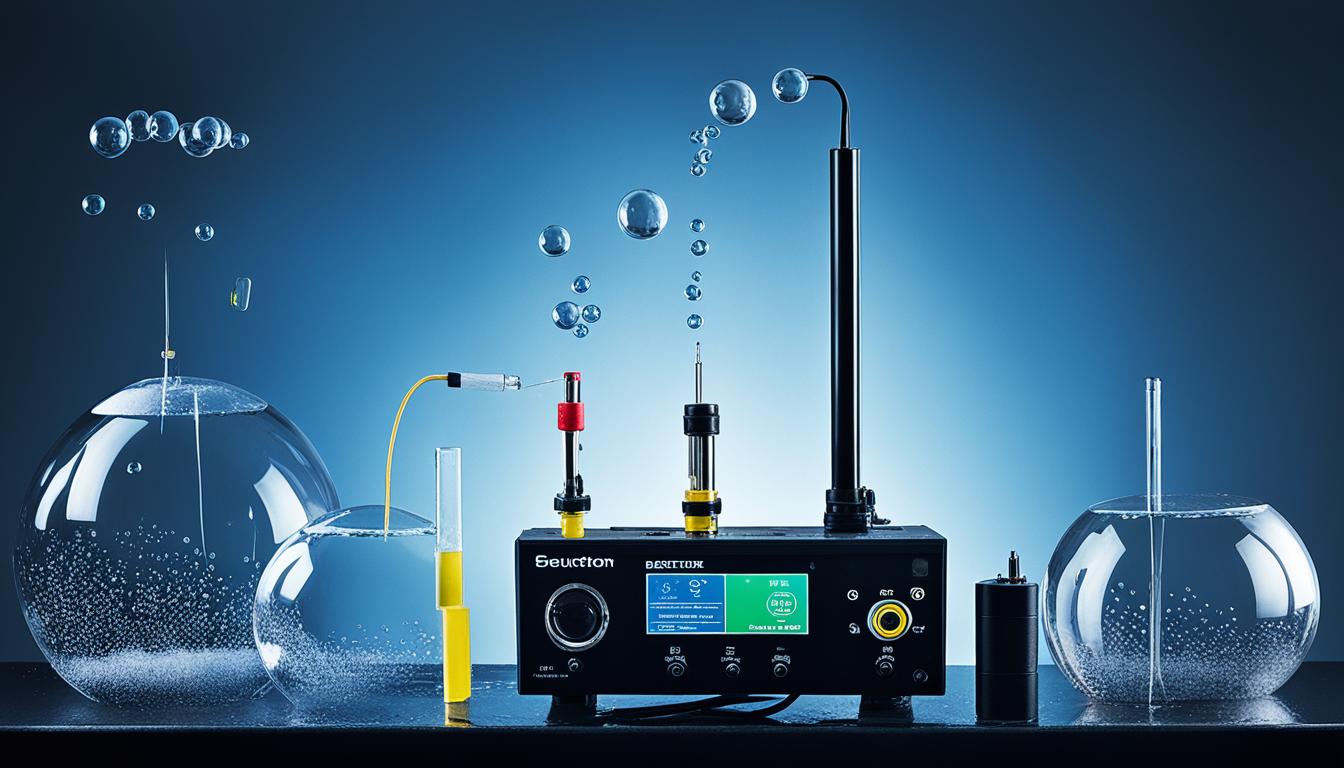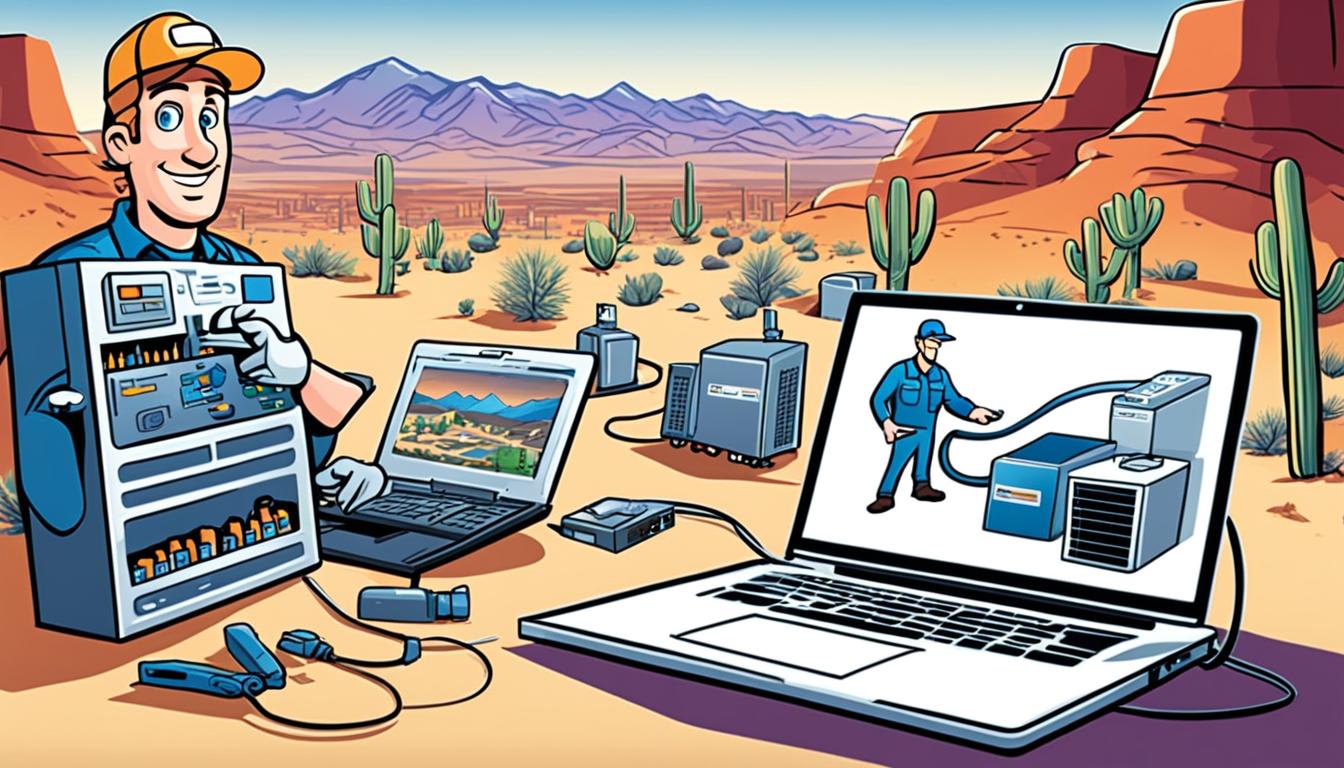Imagine this scenario: you’re a seasoned contractor, diligently searching for a hidden leak in an HVAC system. Every minute counts as you troubleshoot, trying to detect the source of the problem. You need a method that is not only effective but also efficient. You need a solution that will give you the confidence to address the issue swiftly and accurately.
Leak detection is a critical aspect of your work, and the method you choose can make all the difference in your success. That’s why we’re here to shed some light on the pros and cons of using soap bubbles versus electronic detectors for leak detection. This comparative analysis will help you understand the advantages and limitations of each method, allowing you to make an informed decision for your next project.
- Soap bubbles offer visual confirmation of leaks, while electronic detectors provide increased sensitivity and accuracy.
- Soap bubbles can be messy and may have limited effectiveness for smaller leaks.
- Electronic detectors can be prone to false alarms and may not work well in certain environments.
- Choosing the right method depends on the specific needs of the job and the preferences of the contractor.
The Pros of Using Soap Bubbles for Leak Detection
Soap bubbles have long been utilized as a reliable and cost-effective method for detecting leaks in various industries. The use of soap bubbles provides several advantages for leak detection, especially when it comes to visual confirmation and identifying the source of leaks.
When using soap bubbles, contractors apply a soapy solution to suspected areas where leaks may occur. As the solution comes into contact with escaping refrigerant or other gases, bubbles form, indicating the presence and location of a leak. This immediate visual confirmation allows for quick identification and prompt repair of leaks, minimizing any potential damage or safety hazards.
The effectiveness of soap bubbles as a detection method lies in the surface tension properties of the liquid used. The soapy solution lowers the surface tension of the liquid, making it easier for bubbles to form when exposed to air or leaking gases. This property allows contractors to visibly observe and locate leaks, even in hard-to-reach or hidden areas.
To further illustrate the advantage of using soap bubbles for leak detection, consider the following comparison:
| Advantages of Using Soap Bubbles for Leak Detection | Advantages of Using Electronic Detectors for Leak Detection |
|---|---|
| Immediate visual confirmation of leaks | Increased sensitivity for detecting small leaks |
| Cost-effective and easily accessible method | Precise measurements and pinpointing of leak location |
| Effective for detecting larger leaks | Utilizes advanced sensor technology |
Overall, soap bubbles provide an efficient and intuitive way to identify leaks, offering visual confirmation and leveraging the surface tension properties of the liquid used. While electronic detectors have their advantages, such as increased sensitivity and precise measurements, soap bubbles remain a practical choice for leak detection, particularly in scenarios that require immediate and visible confirmation of leaks.
The Cons of Using Soap Bubbles for Leak Detection

While soap bubbles can be effective for larger leaks, they may not be as reliable for smaller leaks or in certain situations. The effectiveness of the bubble method depends on the size and visibility of the leak. Small leaks may not produce enough bubbles to be easily detected. Additionally, the use of soap bubbles can be messy and requires cleanup after the detection process.
When it comes to smaller leaks, soap bubbles may have limited effectiveness due to the size of the bubbles produced. The smaller the leak, the fewer bubbles are generated, making it more challenging to identify the exact location of the leak. This limitation can result in wasted time and effort as contractors may need to apply the soapy solution multiple times to detect a small leak accurately.
Furthermore, soap bubbles can be messy to work with. The application of the soapy solution can lead to spillage and increased cleanup afterward. This messiness adds an extra step to the leak detection process, requiring contractors to clean up the area before proceeding with any necessary repairs or further investigation.
Another consideration is the effectiveness of soap bubbles in specific situations. In certain environments with high air movement or windy conditions, soap bubbles may dissipate too quickly, making it difficult to observe and pinpoint the leak location. Additionally, if the suspected leak area is in an inaccessible or hard-to-reach location, using soap bubbles may be impractical or even impossible.
| Cons of Using Soap Bubbles for Leak Detection | |
|---|---|
| Limited effectiveness for smaller leaks | |
| Messiness and cleanup required | |
| Challenge in windy conditions or inaccessible areas |
The Pros of Using Electronic Detectors for Leak Detection
When it comes to leak detection, electronic detectors offer significant advantages over traditional methods like soap bubbles. These advanced devices are designed with increased sensitivity, allowing them to detect even the smallest leaks accurately.
Electronic detectors utilize cutting-edge sensor technology and signal processing techniques, enhancing their detection accuracy and reliability. By analyzing the received signal, these detectors can provide precise measurements and help pinpoint the exact location of the leak, facilitating efficient repairs.
The increased sensitivity of electronic detectors allows for early detection, preventing potential damage or safety hazards. By promptly identifying leaks, contractors can take immediate action to address the issue, ensuring the continued functioning and longevity of the HVAC system.
In comparison to soap bubbles, electronic detectors offer a more efficient and precise method of leak detection, saving contractors valuable time and resources. These devices deliver reliable results and can be used in various environments and applications, making them versatile and adaptable.
Overall, electronic detectors provide contractors with an advanced solution for leak detection, combining increased sensitivity and detection accuracy with the utilization of signal processing techniques. By incorporating these devices into their workflow, contractors can streamline their operations, deliver superior service to their clients, and ultimately enhance their reputation in the industry.
The Cons of Using Electronic Detectors for Leak Detection

While electronic detectors offer several advantages for leak detection, they also come with their fair share of limitations. It’s important to be aware of these drawbacks to make an informed decision when choosing a detection method.
- False Alarms: One common issue with electronic detectors is the potential for false alarms. These detectors can sometimes mistake other chemicals or background interference as refrigerant leaks, leading to unnecessary alerts. It’s crucial to carefully calibrate and regularly maintain electronic detectors to minimize false alarms.
- Potential Malfunctions: Early models of electronic detectors were sensitive to large refrigerant leaks, causing malfunctions in the detector itself. This limitation has been addressed in newer models, but it’s important to invest in reliable and updated electronic detectors to avoid such complications.
- Environmental Limitations: Electronic detectors may have limitations in certain environments. For example, when used outdoors, they can be affected by external factors such as wind or air currents, making it challenging to accurately pinpoint leak locations. Additionally, areas with heavy background noise may interfere with the detector’s sensitivity, reducing its effectiveness.
To overcome these limitations, it’s essential to carefully evaluate the specific needs of the project and consider alternative methods or supplementary measures in situations where electronic detectors may not be the most suitable option.
A Brief Comparison of Soap Bubbles and Electronic Detectors for Leak Detection
| Aspect | Soap Bubbles | Electronic Detectors |
|---|---|---|
| Leak Detection Method | Visual confirmation of leaks through bubble formation | Detection of refrigerant leaks using advanced sensor technology |
| Effectiveness for Small Leaks | Fewer bubbles may make detection difficult | Increased sensitivity for detecting small leaks |
| Environmental Adaptability | Can be used in various environments | Limited effectiveness in certain environments |
| Potential for False Alarms | Unlikely to produce false alarms | May sometimes detect other chemicals or background interference leading to false alarms |
The table above provides a concise comparison between soap bubbles and electronic detectors for leak detection. It helps highlight the advantages and disadvantages of each method, enabling contractors to make an informed decision based on their specific requirements.
Choosing the Right Method for Leak Detection
When it comes to leak detection, making the right choice between soap bubbles and electronic detectors requires careful consideration. There are key factors that contractors should take into account to ensure they select the most suitable method for their specific needs.
The size and visibility of the leak play a crucial role in determining the appropriate detection method. Soap bubbles provide visual confirmation, making them ideal for larger leaks that are easily detectable. On the other hand, electronic detectors offer increased sensitivity and accuracy, making them the preferred choice for detecting smaller and more elusive leaks.
In addition to the leak characteristics, the specific needs of the job should also be considered. Contractors should assess the desired level of detection accuracy, the speed of the detection process, and the availability of resources for each method. Understanding these requirements will help to identify the method that aligns best with the project’s objectives.
Furthermore, the environment in which the leak detection is taking place is an important consideration. While soap bubbles can be used in various settings, electronic detectors may be more suitable in specific environments. For example, electronic detectors can perform well in noisy areas or outdoor locations where bubble formation may be challenging.
In conclusion, when choosing between soap bubbles and electronic detectors for leak detection, it is vital to consider the size and visibility of the leak, the specific needs of the job, and the environment in which the detection is taking place. By thoroughly evaluating these factors, contractors can make an informed decision and ensure effective and efficient leak detection based on their specific requirements.





0 Comments